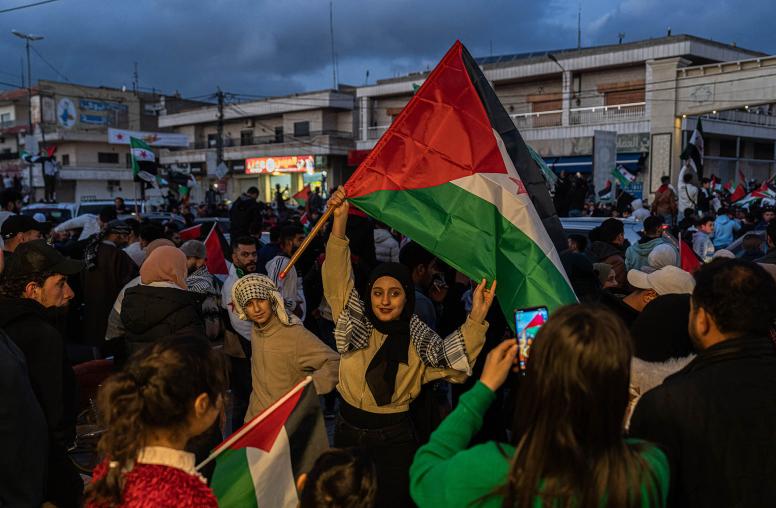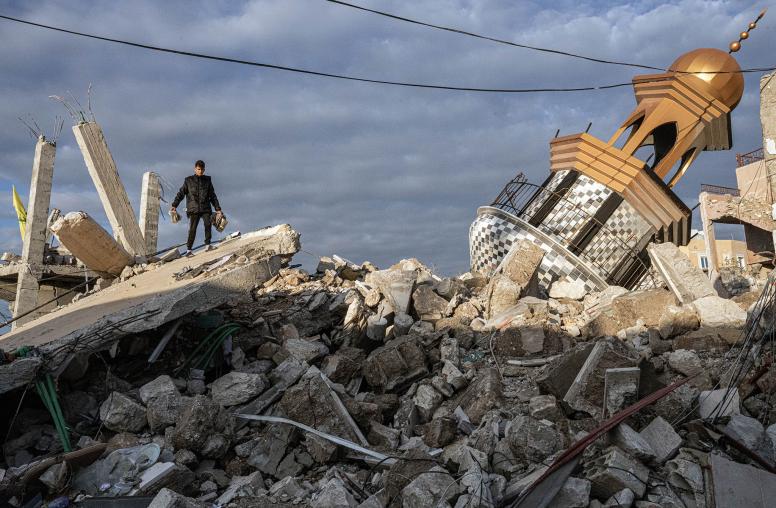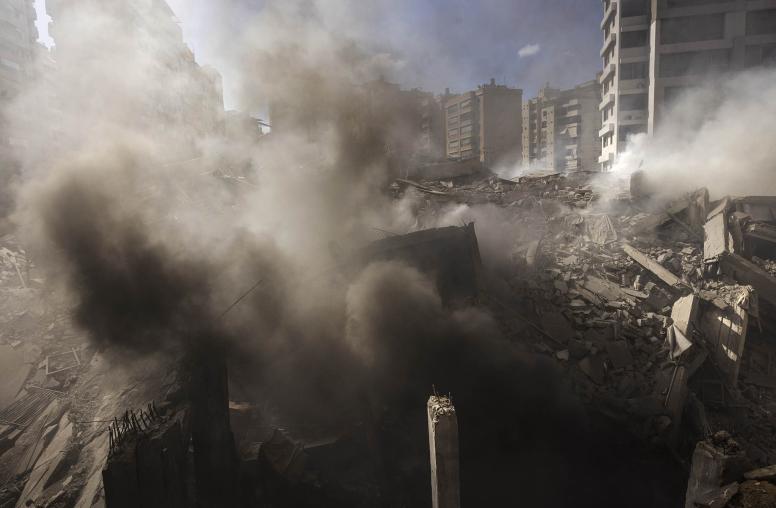Lebanon’s Protests Take a Troubling Turn During Dire Financial Crisis
The country’s new government has yet to take the urgent actions needed to pull the country back from the brink of chaos.
Coinciding with Lebanon’s worst financial crisis in decades, popular protests in the country have been ongoing for more than four months. The protests were initially sparked by a government tax on the popular WhatsApp messaging service. They quickly evolved into Lebanon’s largest, sustained peaceful protest movement. The demonstrations were notable for being geographically diverse and starkly anti-sectarian. Women and youth have played outsized roles in the protests, which emphasized a focus on civic engagement. Recently, however, the protests have taken a troubling turn, with episodic clashes between protesters and security forces.

More worrying, the Lebanese economy continues its downward spiral, with mounting fears that a total economic meltdown may be only weeks away. USIP’s Mona Yacoubian looks at how the protests have evolved amid the country’s economic crisis and what it all means for the United States.
How have the protests evolved in Lebanon?
We’ve seen the protests take a more troubling turn. While a new prime minister and cabinet were named, demonstrators continue to demand more significant change. Despite looming financial catastrophe, the new government has yet to take the urgent actions needed to pull the country back from the brink of chaos. Meanwhile, it appears that the protests could take a turn toward more serious violence. Two recent episodes are particularly concerning:
- Week of rage. Frustrated by continued government inaction, protesters declared a “week of rage” in late January. Some protesters attacked banks and ATMs, while police responded forcefully using teargas, water cannons, and rubber bullets, injuring hundreds according to the Lebanese Red Cross. Journalists and news organizations were also targeted by security forces.
- Parliament protests. On February 11, protesters sought to block members of parliament from participating in a vote of confidence on the new cabinet. Supporters of the new government clashed with demonstrators, and more than 350 people were injured in clashes around the parliament building. A member of parliament was injured after protesters attacked his car.
These developments bear close watching. As the economic situation grows more dire (see below), protests could devolve into much broader social unrest and even anarchy. A more decided turn toward violence would mark a disturbing evolution for the largely peaceful protests. Research on nonviolent protest underscores three important lessons to bear in mind regarding protests that turn violent:
- They are met with higher levels of state repression;
- External groups reduce their support for the goals of the protests; and
- Participation in the protests could also diminish.
At the same time, the economic conditions that prompted the protests continue to deteriorate as Lebanon approaches a total financial collapse. What is the prognosis for Lebanon’s economy and what has been the impact of the deterioration to date?
Lebanon is heading toward a financial collapse as debt repayments come due. It is one of the most indebted countries in the world, with a debt to GDP ratio that is expected to reach 160 percent by the end of 2020. On March 9, a $1.2 billion Eurobond payment is due while additional payments totaling $3.5 billion in principal and interest will be due by June. Many financial analysts believe Lebanon will likely default on the coming payment as its foreign exchange reserves dwindle. While the Lebanese government has not requested an IMF bailout, it will likely face that decision very soon, with significant economic and social implications. An IMF package would likely include demands for comprehensive reforms as well as significant austerity measures.
Going forward, the socioeconomic trends do not bode well: Lebanon is already suffering from rising impoverishment and unemployment, failing infrastructure and inadequate health services.
- Poverty rates have nearly doubled since the beginning of the protests four months ago and could be as high as 50 percent.
- Unemployment is rising as the economy grinds to halt. Significant layoffs took place toward the end of 2019 as the financial crunch hit. Youth unemployment in particular is high and estimated at nearly 36 percent among university graduates, according to the International Labor Organization.
- Inflation has also surged as the Lebanese pound has suffered an estimated 60 percent devaluation.
- Significant economic contraction is expected this year as Lebanon reels from the crisis.
- Brain drain is another concern as those with talent and the means are leaving as opportunities dry up and the situation becomes more dire.
Lebanon hosts a large number of Syrian refugees. What has been the impact of the financial crisis on the refugee population?
As with impoverished Lebanese citizens, Syrian refugees have suffered significantly in the current crisis. The vast majority were living below the poverty line since well before the financial crisis. The devaluation of the Lebanese lira has had an adverse impact on the cash assistance Syrian refugees receive from the United Nations Refugee agency, dramatically undercutting their already limited purchasing power. Prior to the current economic downturn, Syrian refugees were already subject to harassment and the threat of forced return. These threats are now compounded by the crisis. The new cabinet has alluded to the need to return refugees to their country, underscoring the Lebanese government’s rejection of any sort of integration or resettlement of refugees into Lebanese host communities. As the economy continues to deteriorate, pressure may mount to force Syrian refugees to return to Syria.
What are the implications of the current crisis for the United States?
A failed state in Lebanon is not in the United States’ national security interest. Maintaining security and stability in Lebanon remains an important priority for the U.S. Chaos and state failure in Lebanon would have significant negative ramifications. As noted, Lebanon hosts a large refugee population (the largest per capita in the world), which could be further displaced in the event of state collapse, creating yet more instability. Should Lebanon descend into chaos, bad actors across the spectrum from Sunni jihadist groups such as ISIS to Hezbollah, the Lebanese Shiite militant organization, could exploit the resulting security and political vacuum to their benefit. Given the tumult already prevailing in the region, particularly in neighboring Syria and just beyond in Iraq, preserving Lebanon’s relative stability is an important bulwark against broader regional turmoil.



